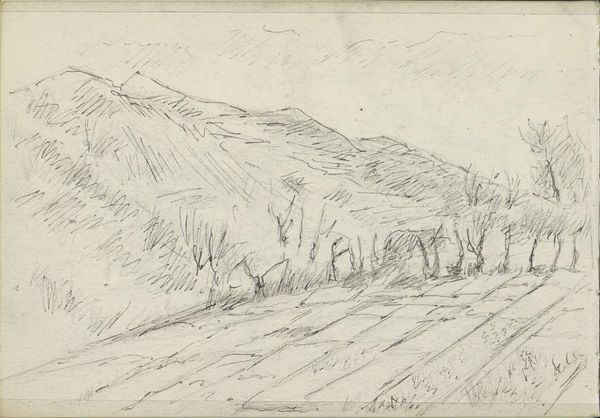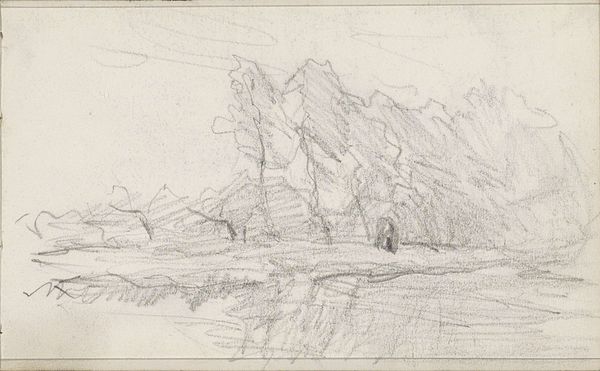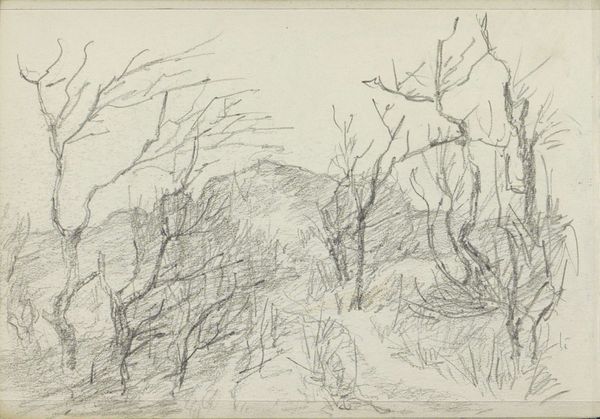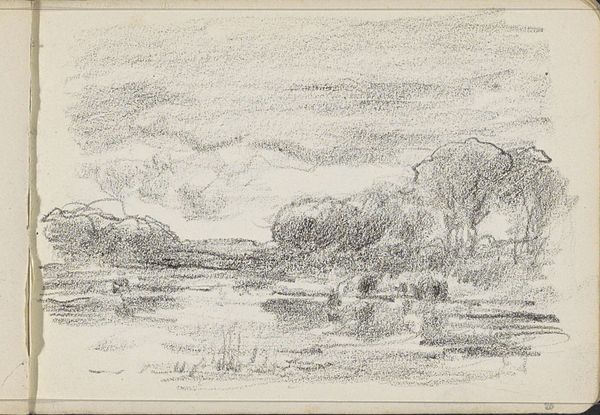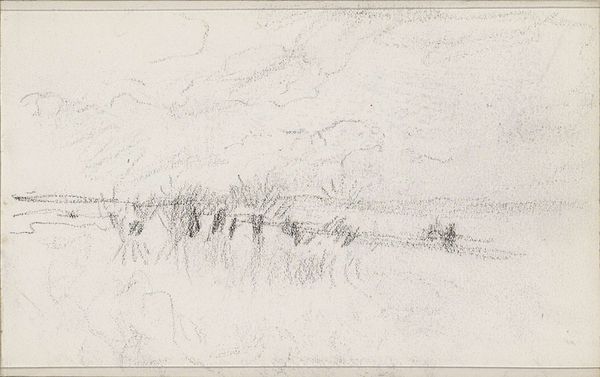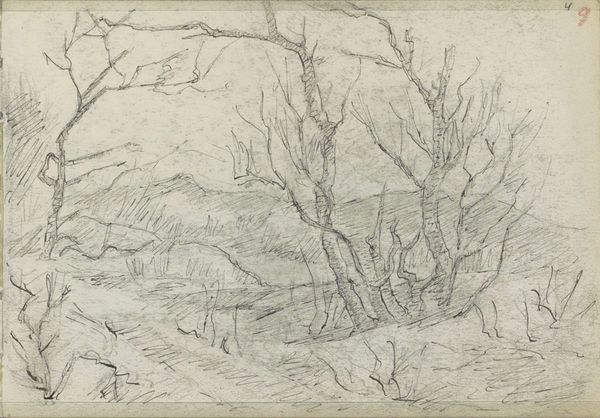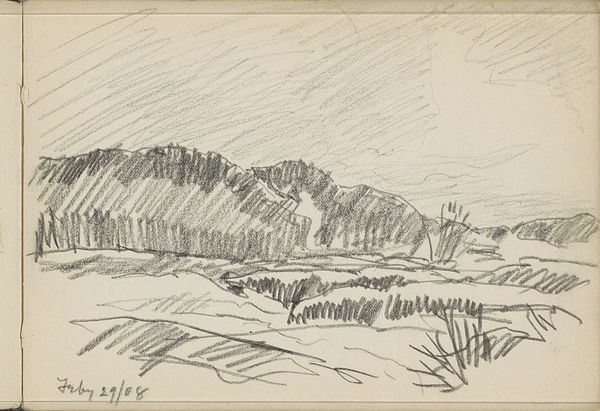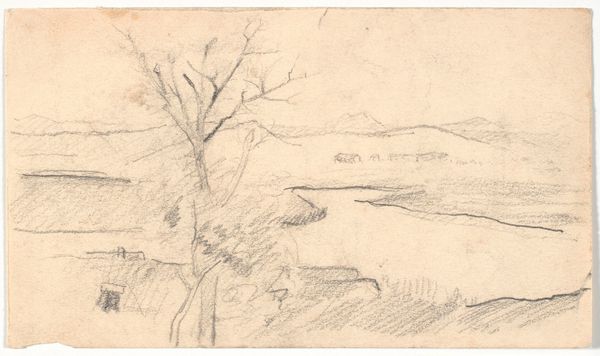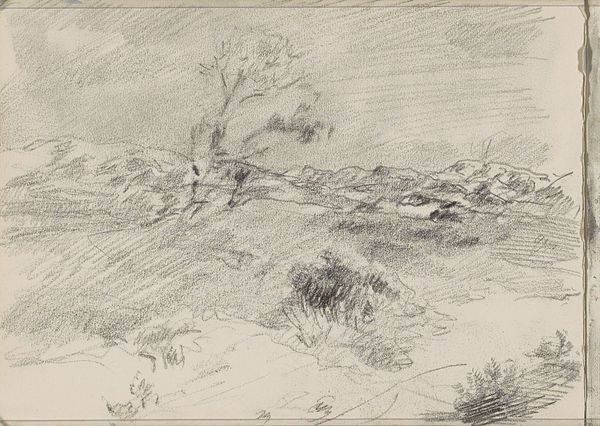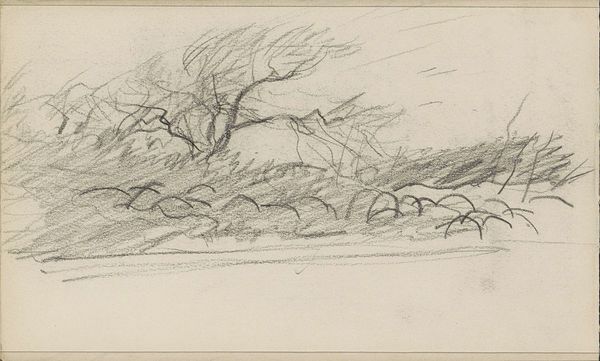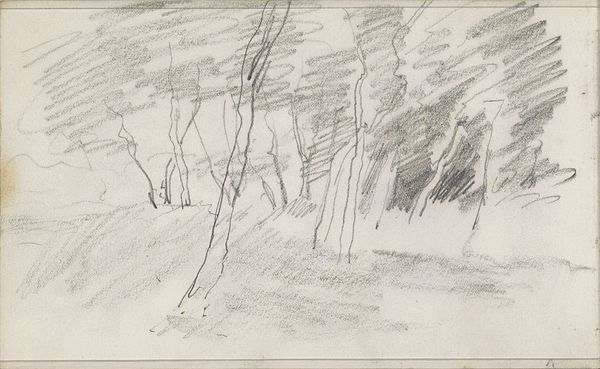
drawing, ink, pencil
#
drawing
#
pen sketch
#
pencil sketch
#
landscape
#
ink
#
pen-ink sketch
#
pencil
#
realism
Copyright: Rijks Museum: Open Domain
Editor: This is Jozef Israëls' "Heuvellandschap met bomen en planten," a landscape drawing created sometime between 1885 and 1902 using pencil and ink. I find it quite stark, almost barren, yet the textures are captivating. What can you tell me about this piece? Curator: The perceived "starkness" resonates with broader socio-political trends in late 19th-century European art. Israëls, part of the Hague School, was deeply engaged in portraying the lives of ordinary people and, frequently, their relationship to the land. How does this drawing, devoid of figures, speak to those themes for you? Is it about the land's ability to provide or the hardship it might represent? Editor: I see it more as a neutral observer. It doesn’t seem to be advocating for one side or the other; it’s simply presenting the landscape as it is. It prompts reflection, rather than a call to action. Curator: That's a keen observation. Israëls aimed for realism, but realism with an emotional undercurrent. Could the choice of such seemingly desolate scenery be interpreted as a subtle commentary on the social and economic struggles faced by rural communities during that era? The institutional art world often expects clear messages, which complicates interpretations of ambiguity. Editor: That makes me rethink my initial impression. Perhaps the subtlety is a deliberate artistic choice to avoid blatant politicization, but still alluding to those hardships. Curator: Precisely. Consider how museums displayed works like these, shaping public perception. Were they presented as objective depictions of nature or as implicit critiques of social conditions? Israëls' landscapes invite this nuanced analysis. Editor: I hadn’t thought about how the display itself adds to the meaning. Now I see the "Heuvellandschap" as something more than just a landscape, and realize the important role institutions have on shaping art narratives. Curator: And I see it anew through your initial, purely aesthetic reading, which reminds us that art functions on many levels simultaneously.
Comments
No comments
Be the first to comment and join the conversation on the ultimate creative platform.

